Gulf oil spill one year later
What is the cost of spilling almost five million barrels of oil into the ocean? How do you measure that cost? In GDP reduction? In lives affected? In environmental impact? And how do you measure the cost when long-term effects are impossible to calculate yet, and when a significant portion of the spilled oil is still unaccounted for? One year since the Deepwater Horizon platform exploded, killing 11 workers, there are measurable effects, and many more unknowns. Collected here are pictures of the disaster, recent images of people affected by the spill, and views of the cleanup. Pictures 4 through 10 show areas of shoreline both immediately after the spill and the same area a year later. Click on the picture to see it change from the 2010 view to the present. This effect requires javascript to be enabled. -- Lane Turner (36 photos total)


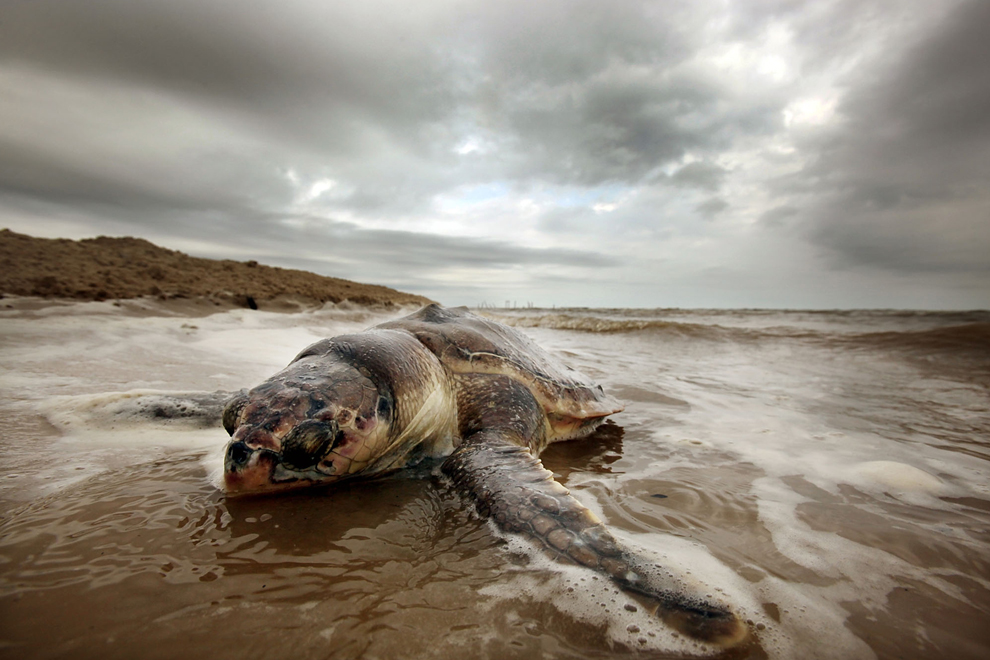
Dead sea turtles wash up on the same Waveland, Miss. beach on May 5, 2010 and April 14, 2011. Endangered sea turtles and dolphins are still dying in high numbers in Mississippi, which continues to be impacted by tar balls and weathered oil. [click image to see it fade] (Joe Raedle/Getty Images) (Mario Tama/Getty Images)

Oil-smeared pelican eggs are seen in a nest on Cat Island, La. on May 22, 2010, and on the same spot on April 8, 2011. The view shows the island significantly eroded and the marsh grass and mangrove trees that pelicans nest on decimated. The island was covered by oil and poorly maintained booms impacted it as well. [click image to see it fade] (Gerald Herbert/AP)
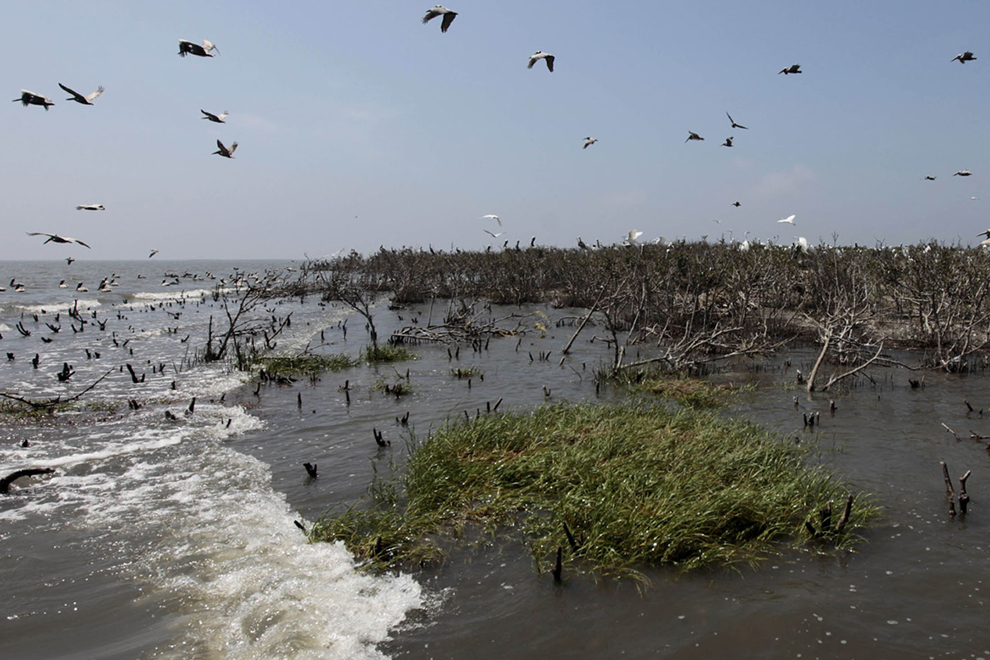
The same spot in Barataria Bay, La. on May 22, 2010, and April 8, 2011. In the first photograph, nesting pelicans land as oil washes ashore, and the second photograph shows the shoreline heavily eroded, with the lush marsh grass and mangrove trees mostly dead or dying. [click image to see it fade] (Gerald Herbert/AP)
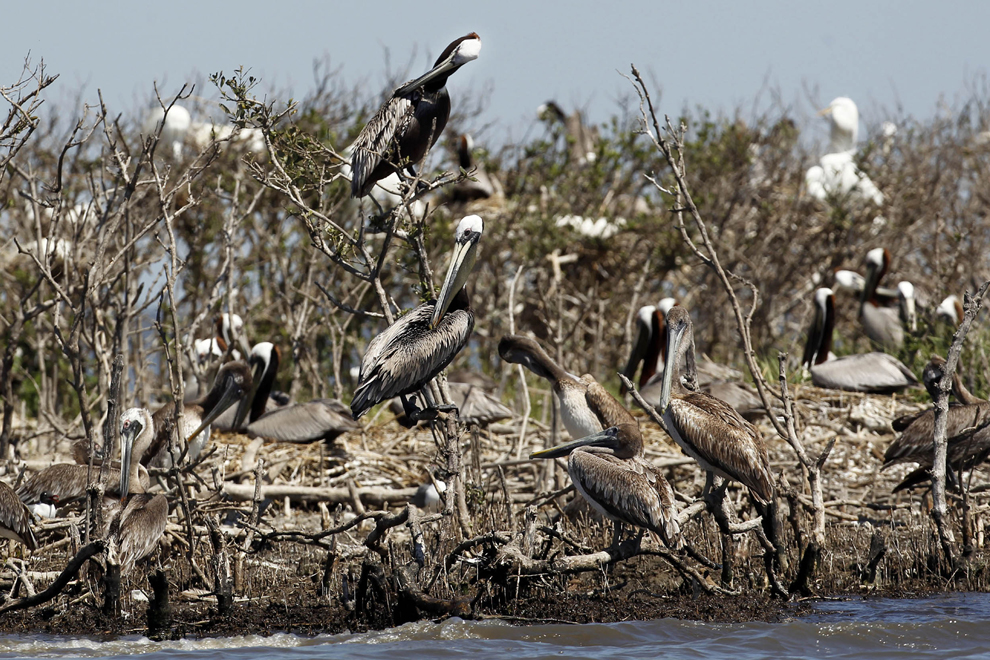
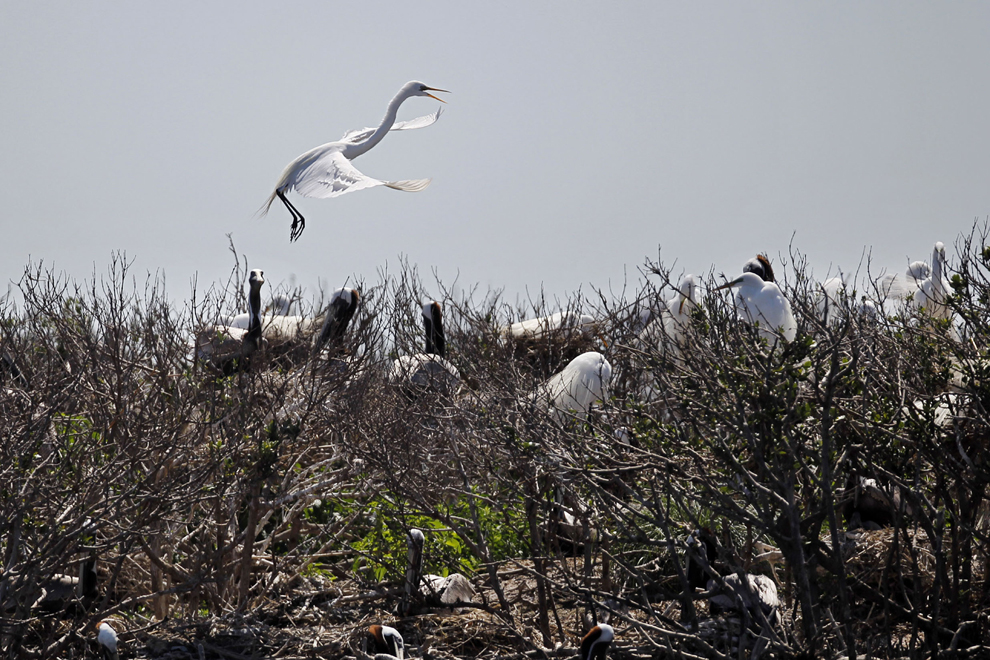

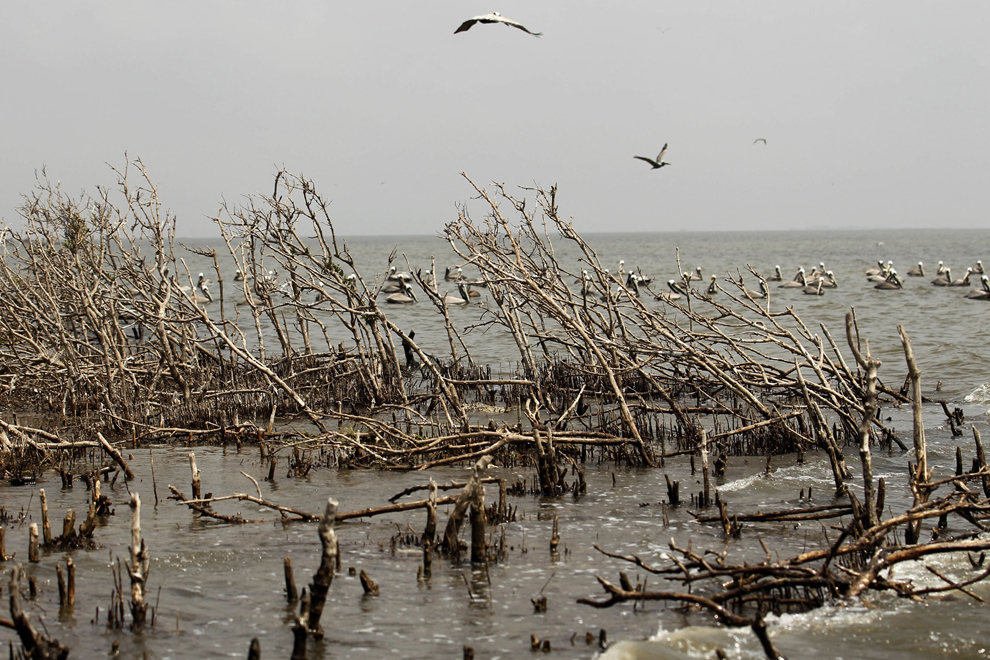
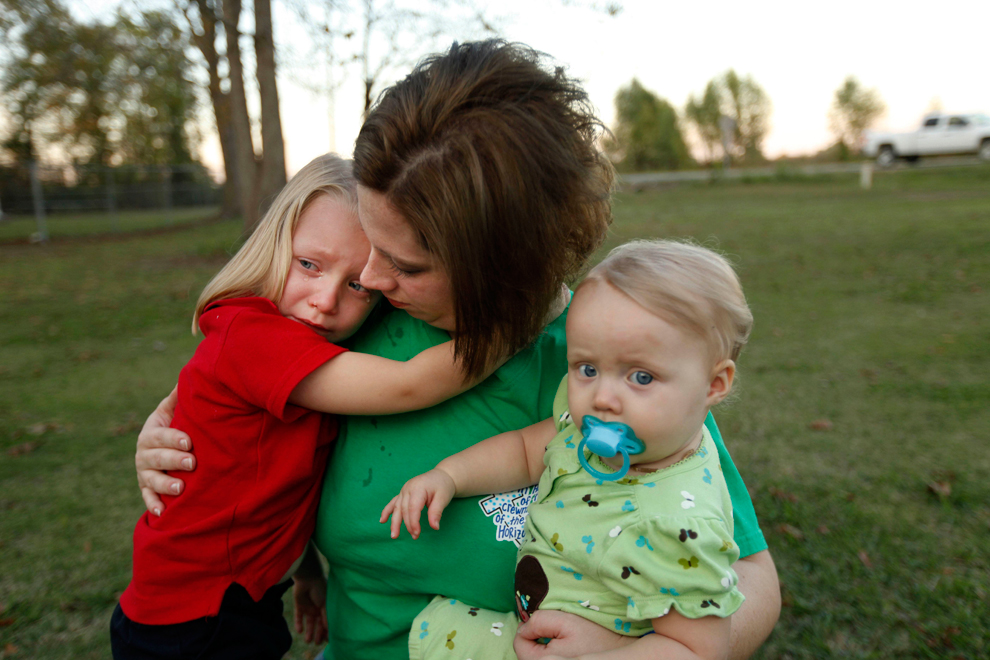
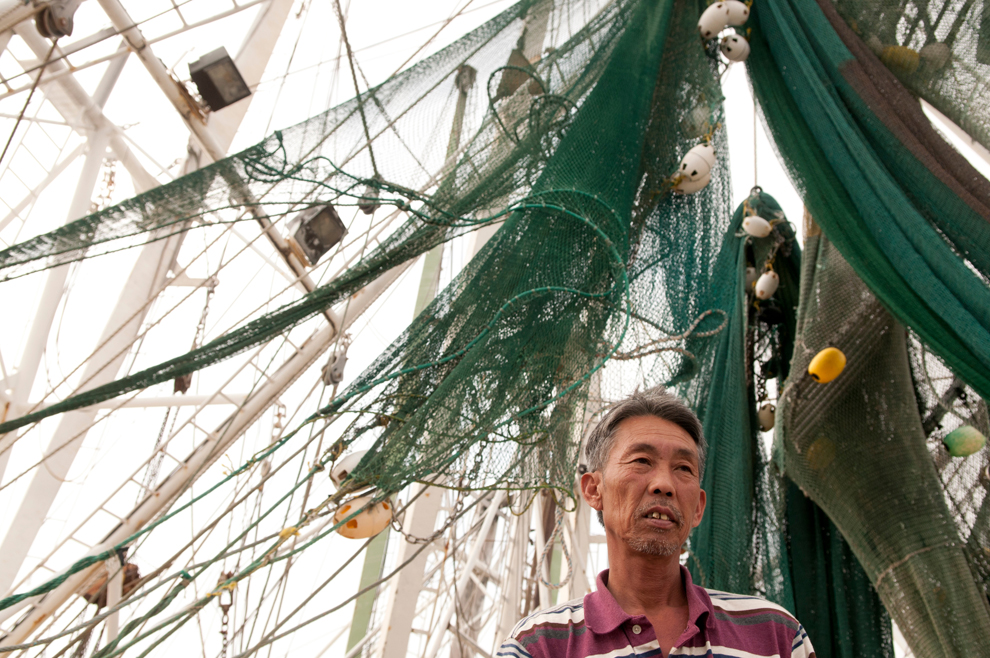
Shrimper Sanh Dixie Le waits another day without shrimping, spending time on his boat "Quoc Viet", docked in Grand Isle, La., March 9. Le says after an average of eight hours of shrimping in the waters of the Gulf of Mexico he yields only three or four baskets of shrimp. He says BP offered him only $32,000, while other shrimpers have received $100,000. With gas prices high, he has to be selective about when he goes out. (Rod Lamkey, Jr./AFP/Getty Images)
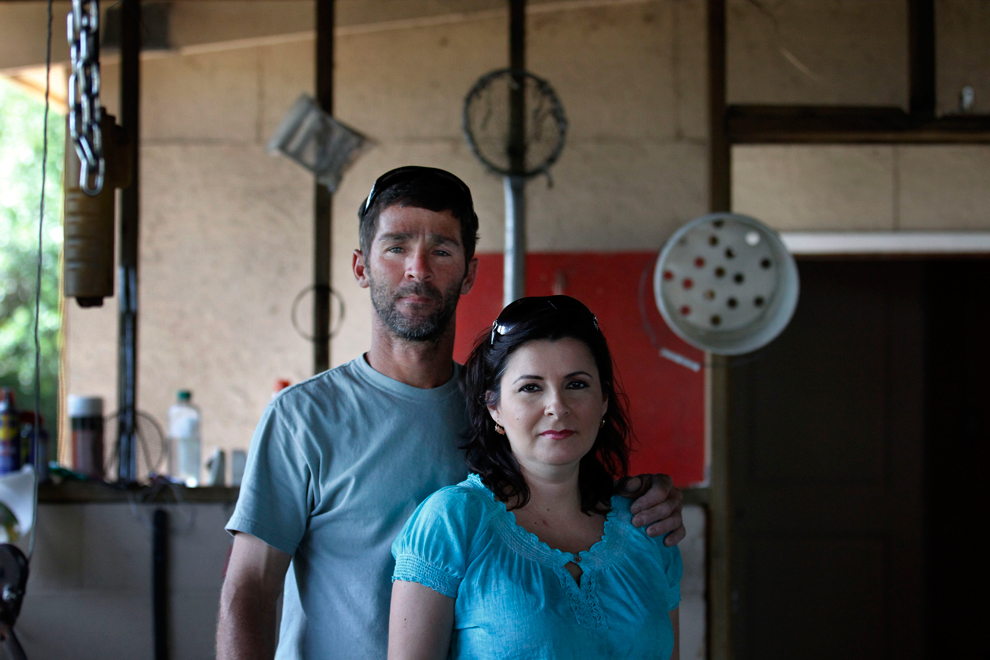
Crab fisherman Thomas Barrios and his wife Alicia pose in the back of the family restaurant Alicia runs, Barrios Seafood Restaurant, in Golden Meadow, La. The family's income is completely dependent on the bounty of the seafood industry. They had to lay off workers and are struggling to stay afloat, as his crabbing enterprise has been halted, and the restaurant sales have been less than half since the Deepwater Horizon oil spill. (Gerald Herbert/AP)
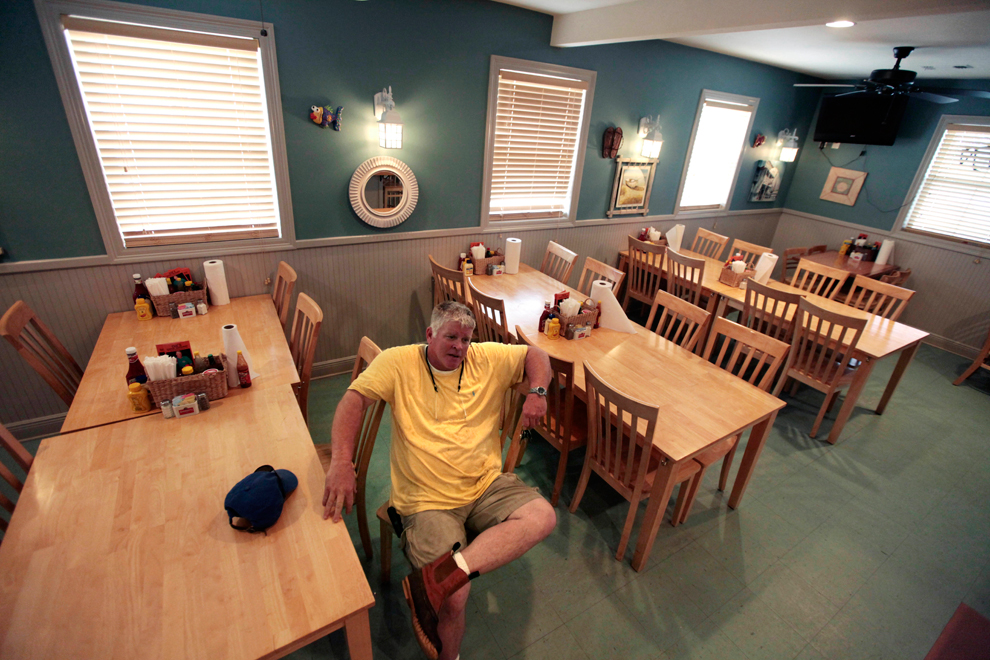
Melvin Barnes, owner of Cuz's Seafood Restaurant and Market in Bay St. Louis, Miss., sits inside his empty restaurant on March 29. The oil spill closed waters that supplied much of the catch sold in the market. Customers stayed away from the restaurant, too, repulsed by the idea of eating Gulf seafood. Barnes sold off trucks to raise cash and is waiting for an interim compensation offer to arrive. (Gerald Herbert/AP)
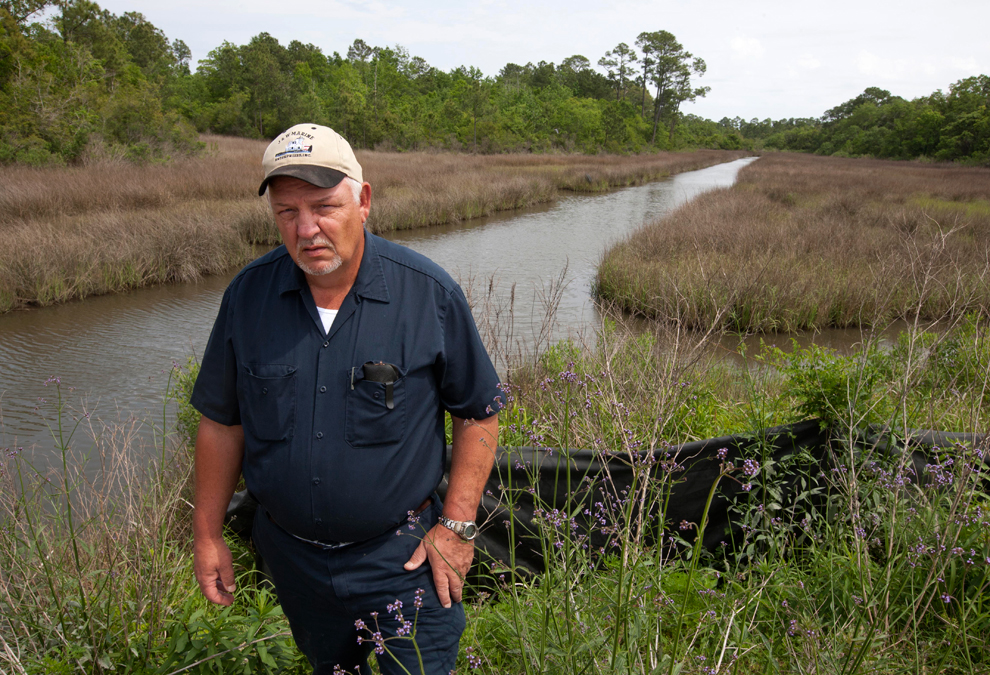
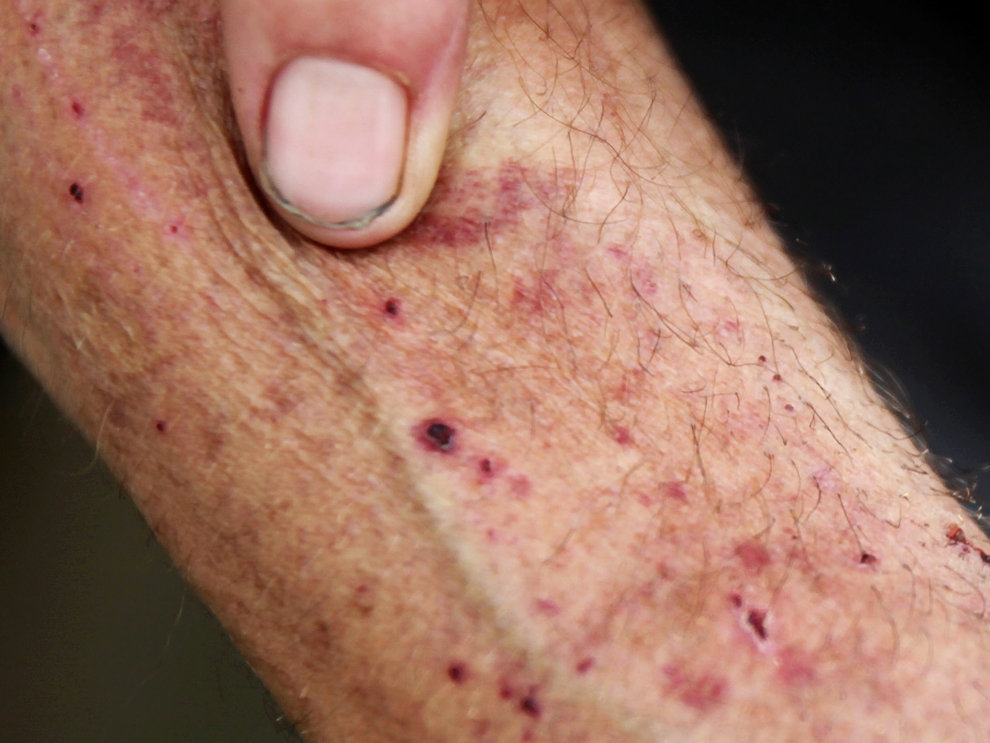
Brad Mizell points to sores on his arm before attending a meeting for Gulf Coast residents who have health problems possibly related to the oil spill on April 18 in Bay St. Louis, Miss. Mizell worked on BP's Vessels of Opportunity program which hired local fishermen to help clean up the oil spill. He believes he was exposed to toxic dispersants and says he has since lost 50 pounds and developed a form of Rheumatoid arthritis and is now on 17 medications including steroids. More than 2 million gallons of the toxic dispersant Corexit were poured into the Gulf of Mexico following the spill. Corexit is banned in all of Europe because of its toxicity. (Mario Tama/Getty Images)
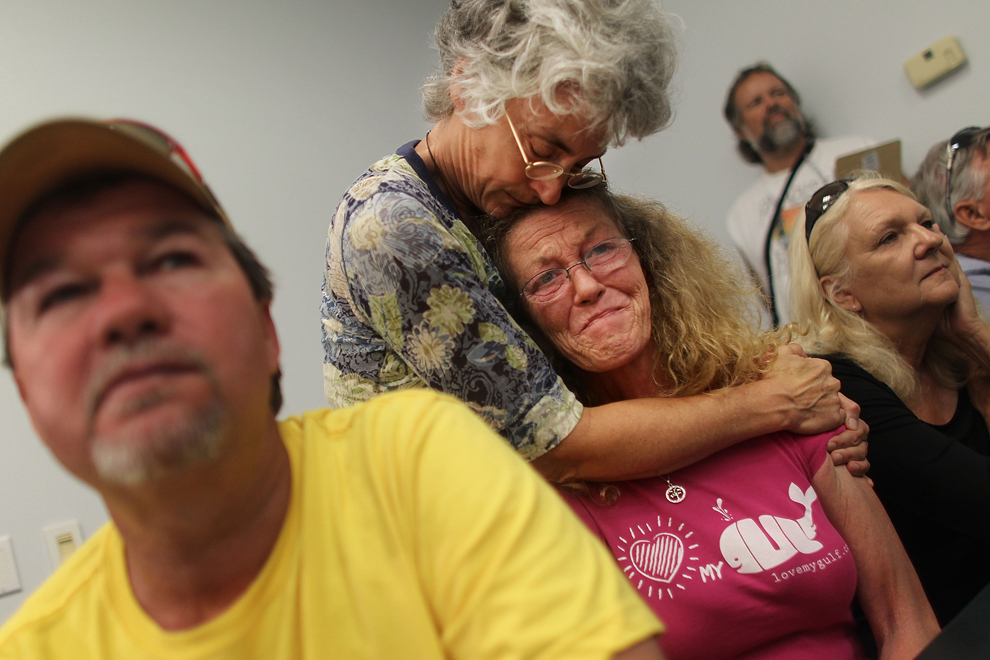
Lorrie Williams is hugged by oil pollution activist Riki Ott as Bud Waltman (left) pauses at a meeting for Gulf Coast residents who have health problems possibly related to the BP oil spill April 18 in Bay St. Louis, Miss. Williams has developed a litany of illnesses since the spill including lung polyps along with liver, thyroid and blood problems. Ott is a marine biologist and former commercial fisherwoman who was affected by the Alaska Exxon Valdez spill and is now advising Gulf Coast residents. (Mario Tama/Getty Images)


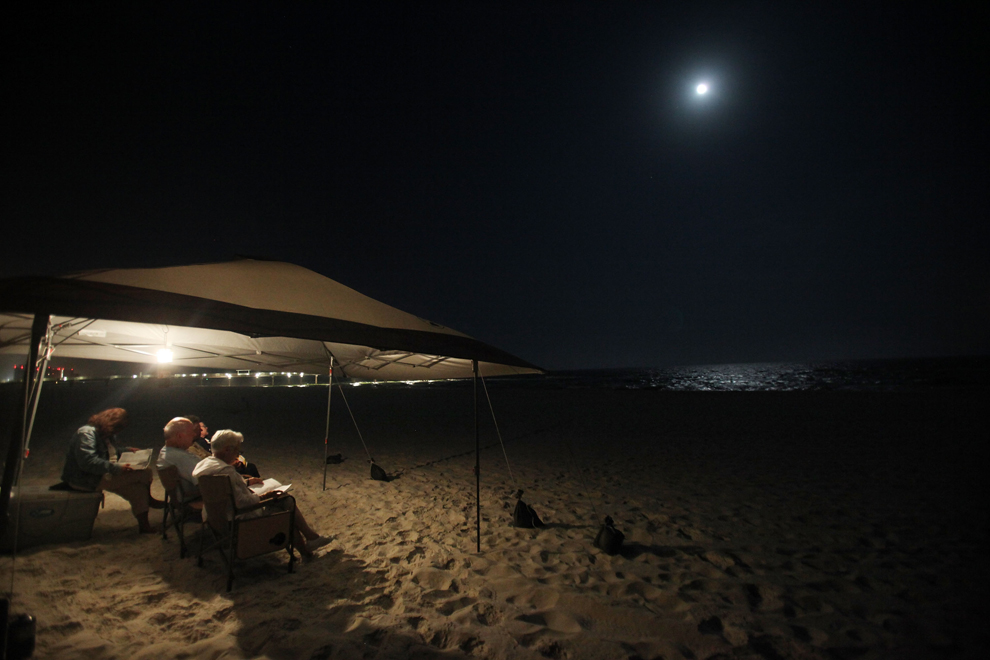

Institute for Marine Mammal Studies veterinary technician Wendy Hatchett prepares to take a skin sample from a dead bottlenose dolphin that was found decomposing on Ono Island, Ala. and brought for examination to Gulfport, Miss. Since January, 155 young or even fetal dolphins and small whales have washed up dead on Gulf beaches - more than four times the normal amount - according to the National Oceanic and Atmospheric Administration. A NOAA official called the oil spill "a possible cause" in the uptick in deaths. (Patrick Semansky/AP)
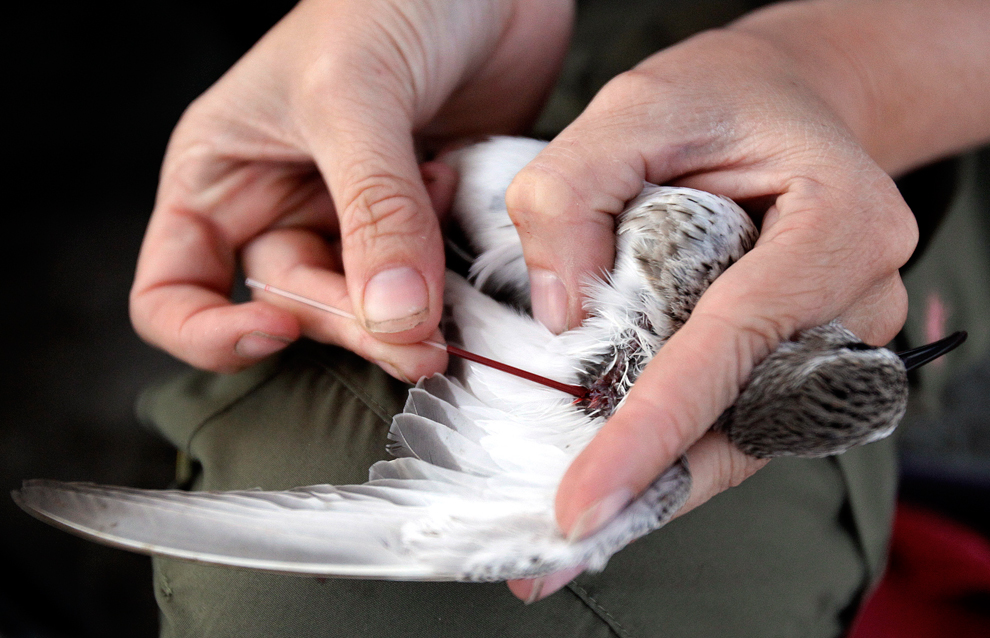
Tulane University population ecologist Jessica Henkel takes a blood sample from a Dunlin sandpiper on Fourchon Beach in Port Fourchon, La., as part of a research project that is looking for long-term, lethal effects from the oil spill on birds that stop along the Gulf Coast during their migration. “It's much easier to see a dead pelican on the beach” than it is to see more chronic population-wide effects, Henkel said. (Patrick Semansky/AP)
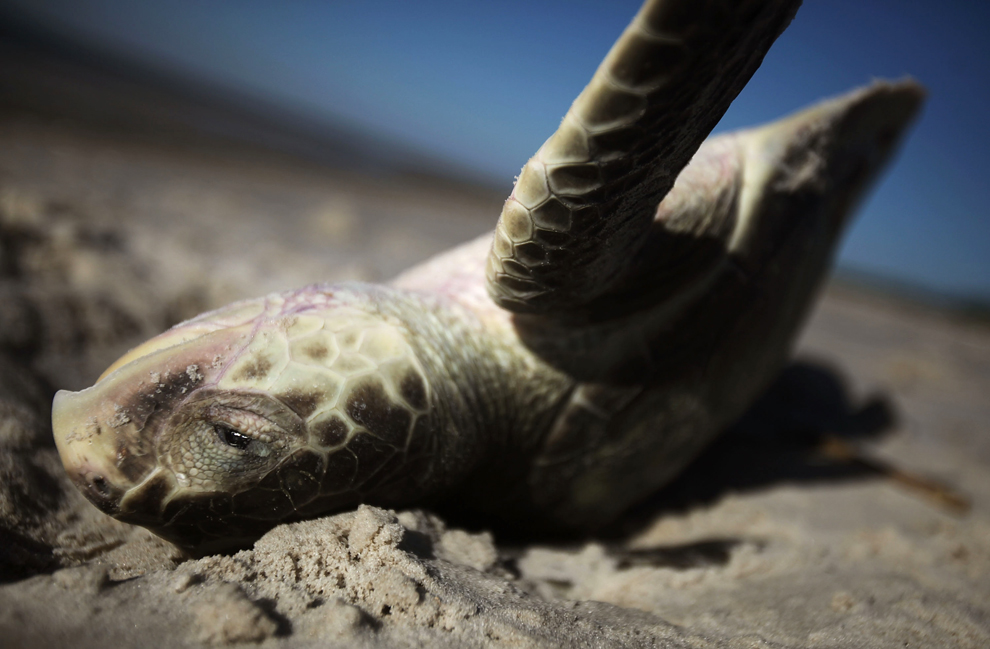
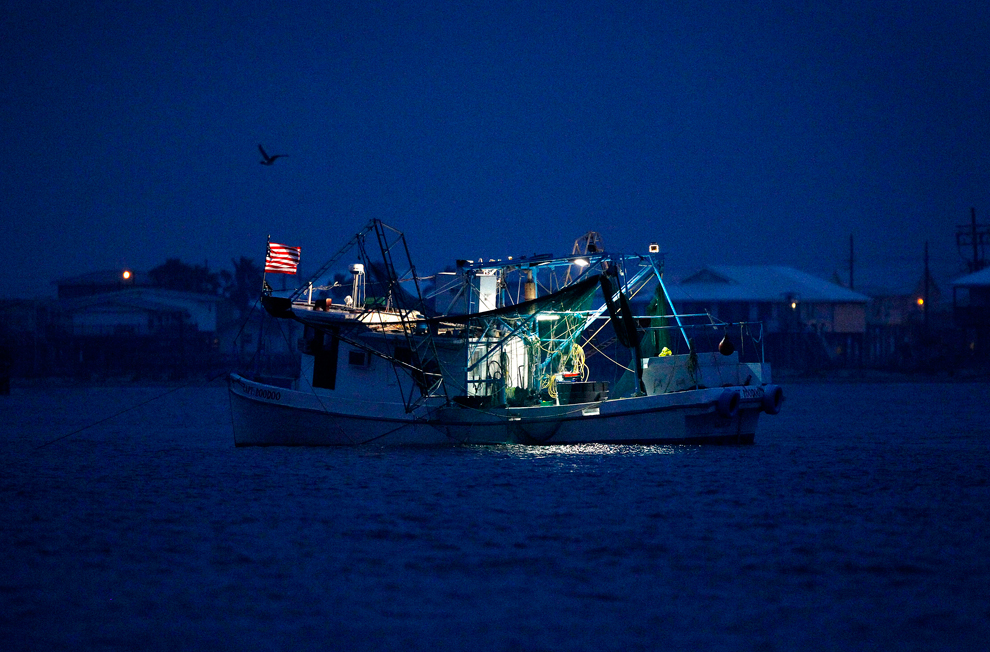
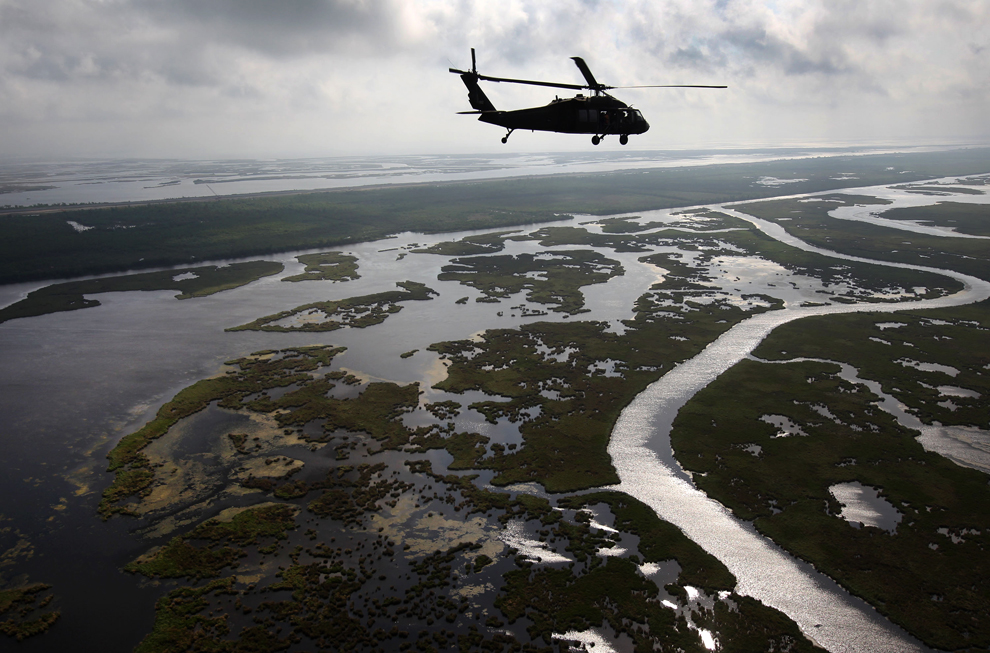
A Louisiana National Guard helicopter flies over marshland on April 19 in route to Middle Ground in southern Louisiana. A year after the oil spill coated Gulf Coast marshes and beaches, BP claims that most of the oil has been removed. Louisiana Wildlife and Fisheries says, however, that much of the cleaning has been superficial, as the oil has seeped into the soil, killing marshes and further eroding the state's damaged delta ecosystem. (John Moore/Getty Images)
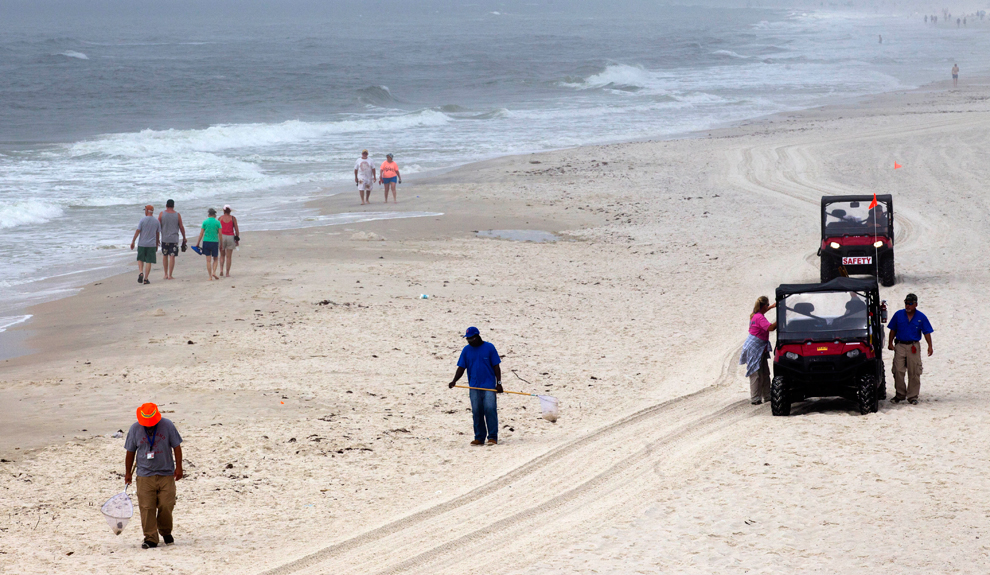
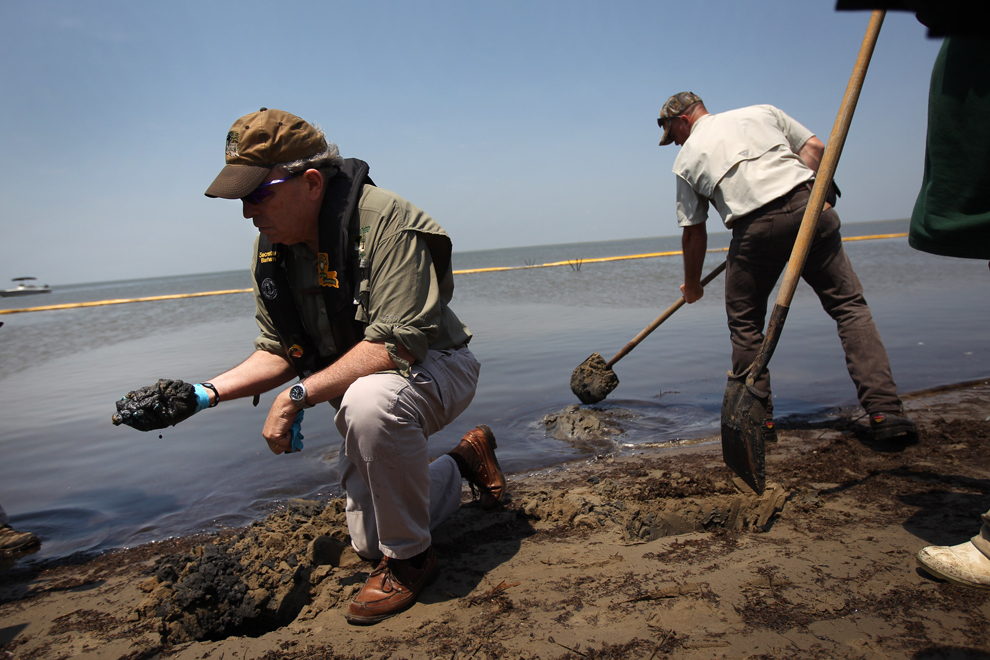
Robert Barham of the Louisiana Wildlife and Fisheries office digs up oiled sand on a beach on April 19 at South Pass in southern Louisiana. BP claims that most of the oil has been removed. Barham says, however, that much of the coastal cleaning has been superficial, as the oil has seeped into the soil, killing marshes and further eroding the state's damaged Mississippi Delta ecosystem. (John Moore/Getty Images)
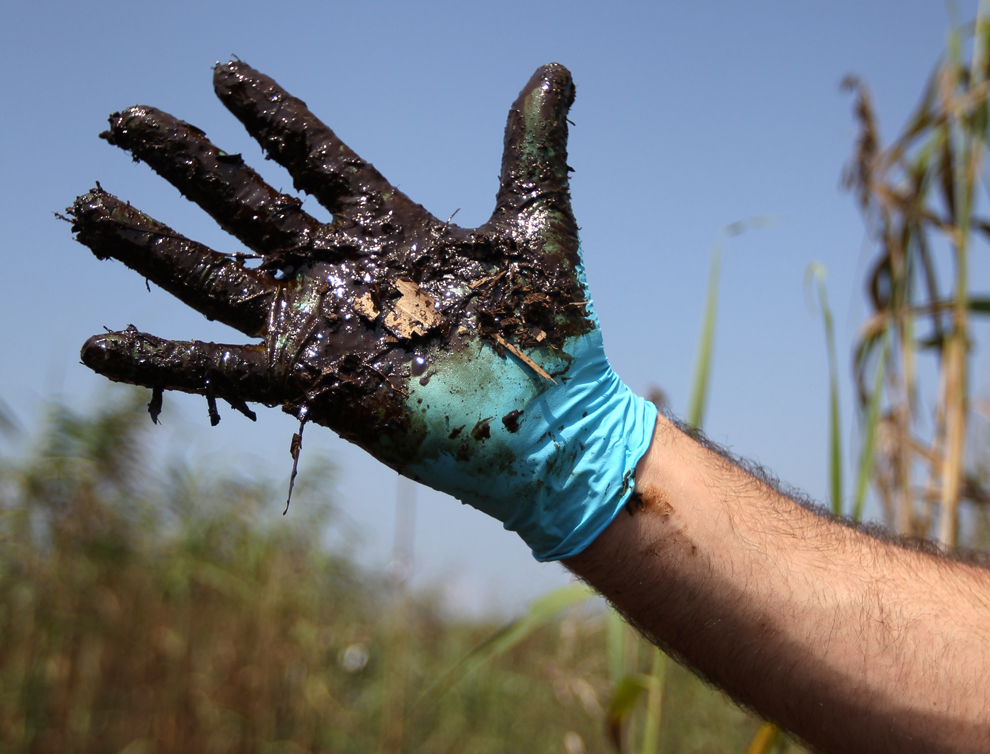
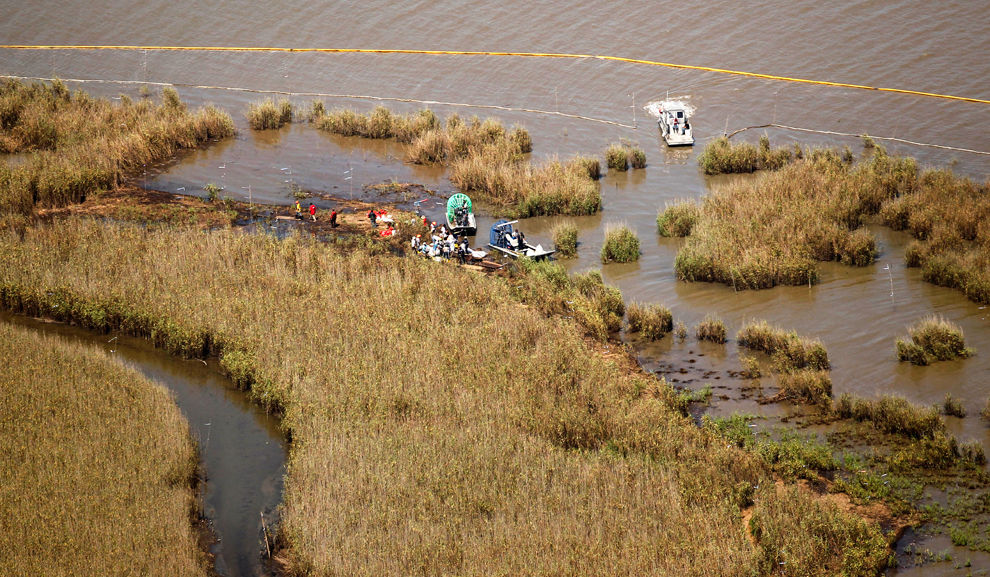
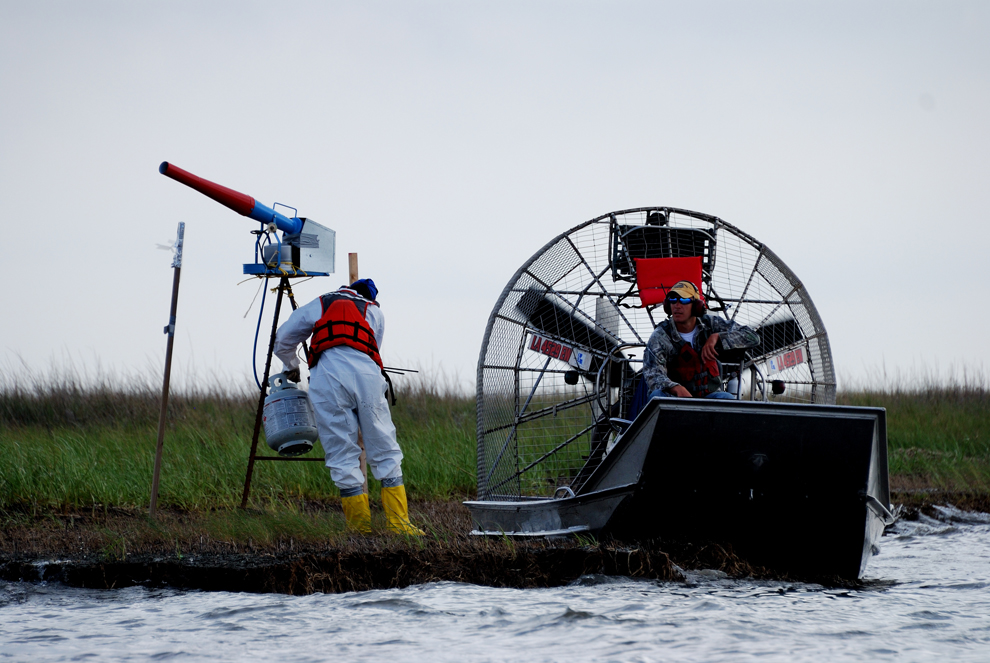
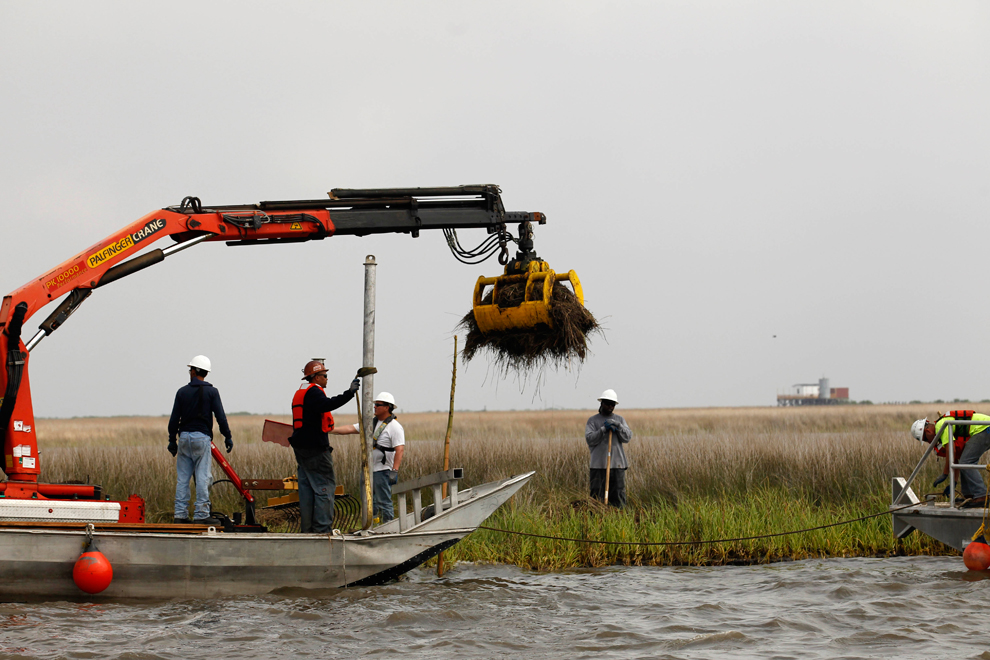
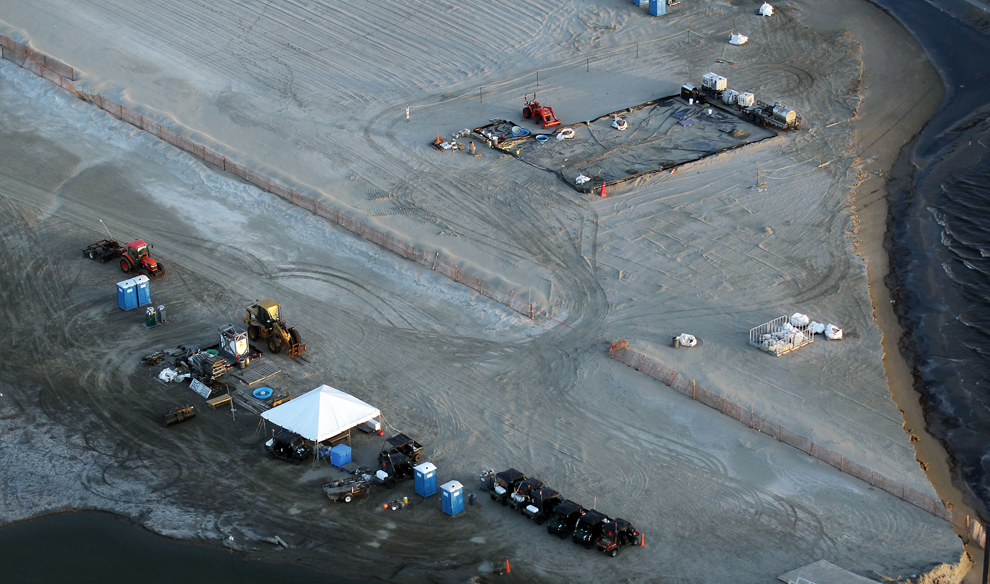
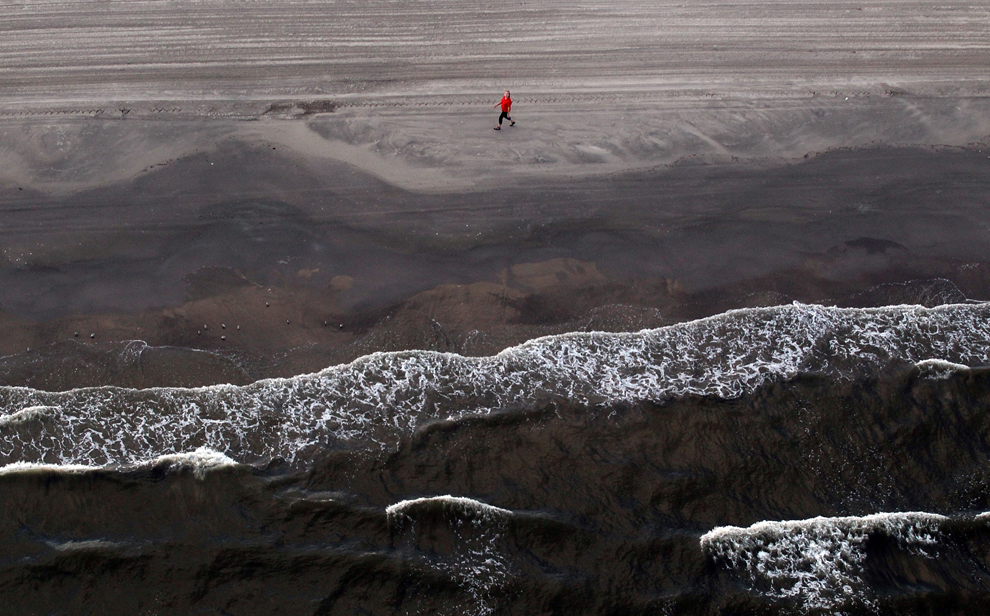
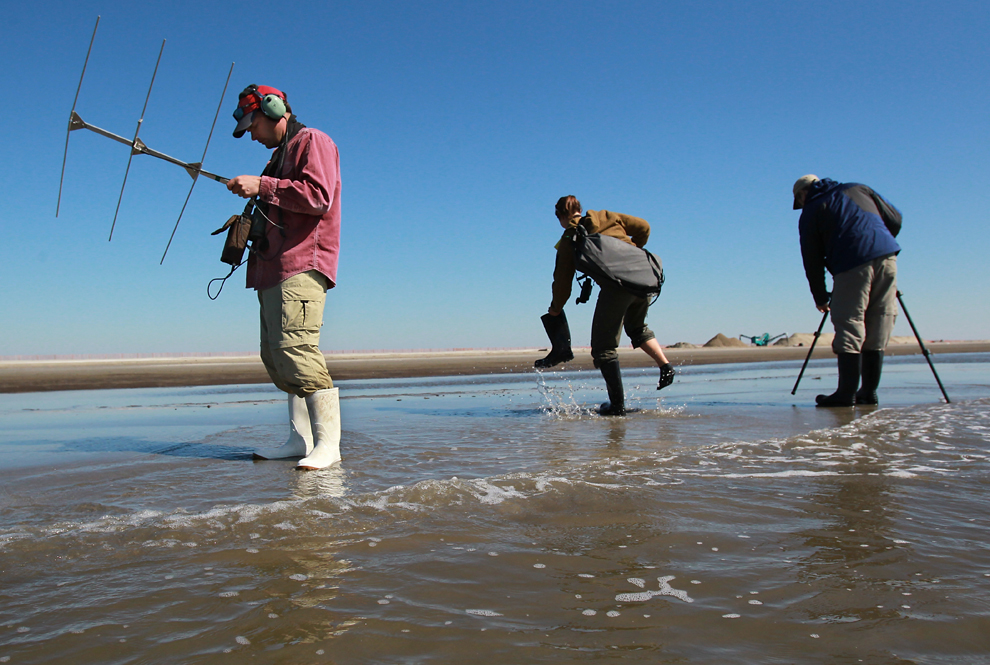
A group of scientists from the Manomet (Mass.) Center for Conservation Sciences spent months trying to catch, radio tag, and track the tiny oystercatcher, a rare shore bird, in order to help calculate the costs of the oil spill in the Gulf of Mexico. Shiloh Shulte, coordinator of the American Oystercatcher Campaign, used an antenna to listen for a signal indicating life or death for a banded bird, while field technician Laura Koloski and Stephen Brown, director of Shore Bird Science, worked nearby in Grand Isle, La. on November 8, 2010. (Suzanne Kreiter/Globe Staff)
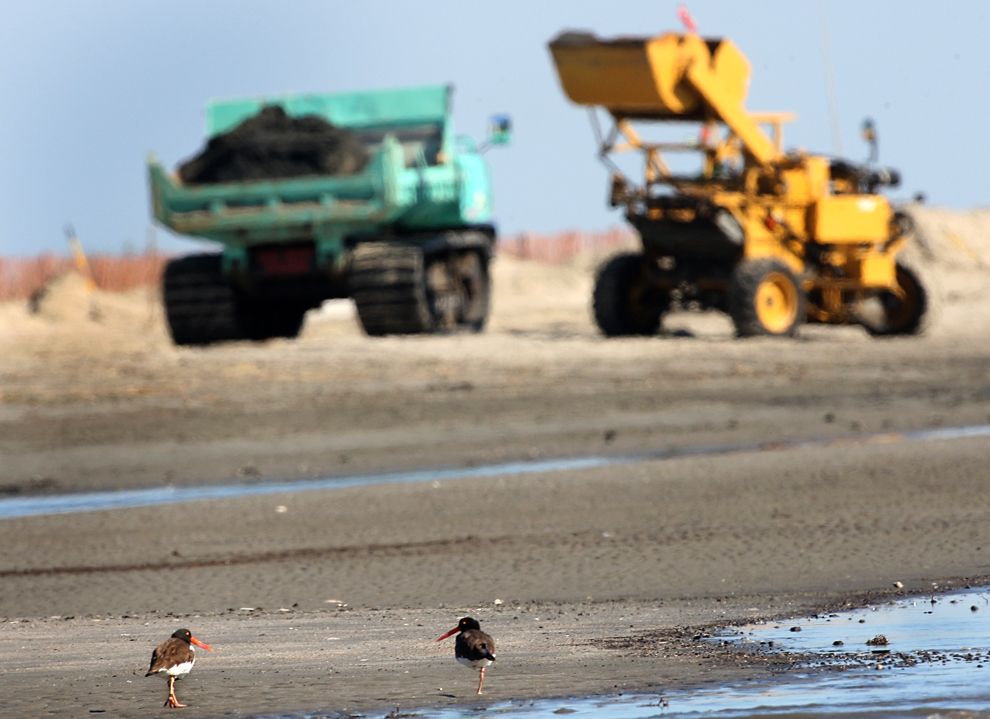

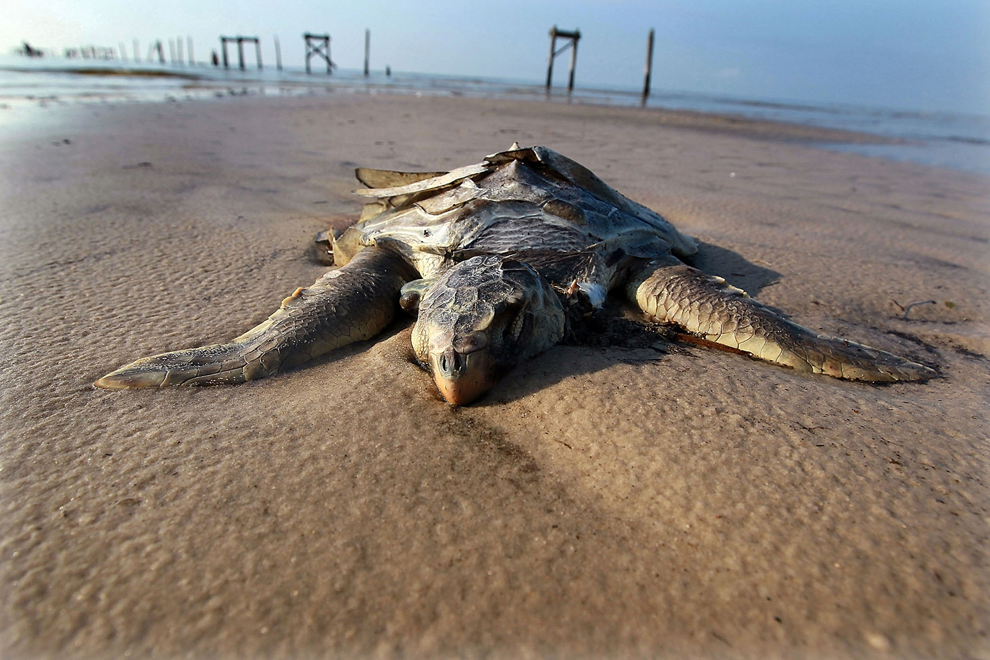


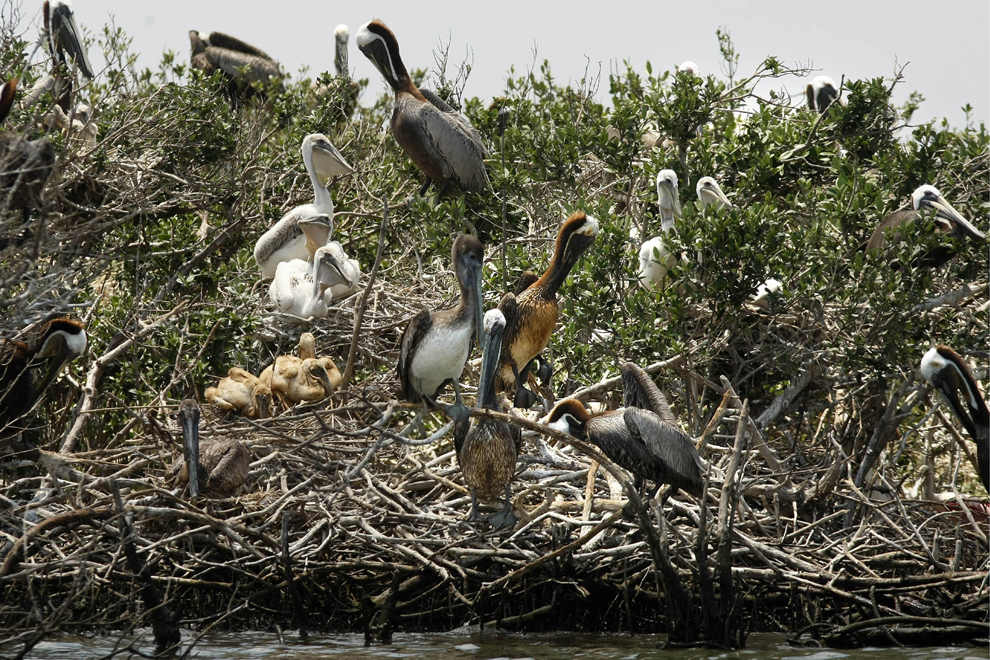
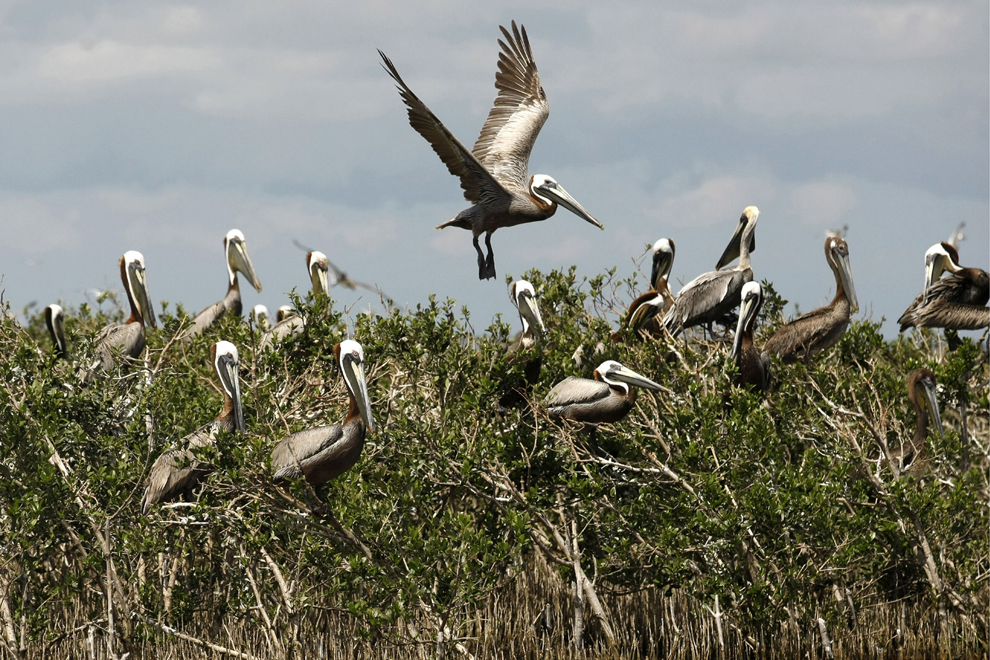
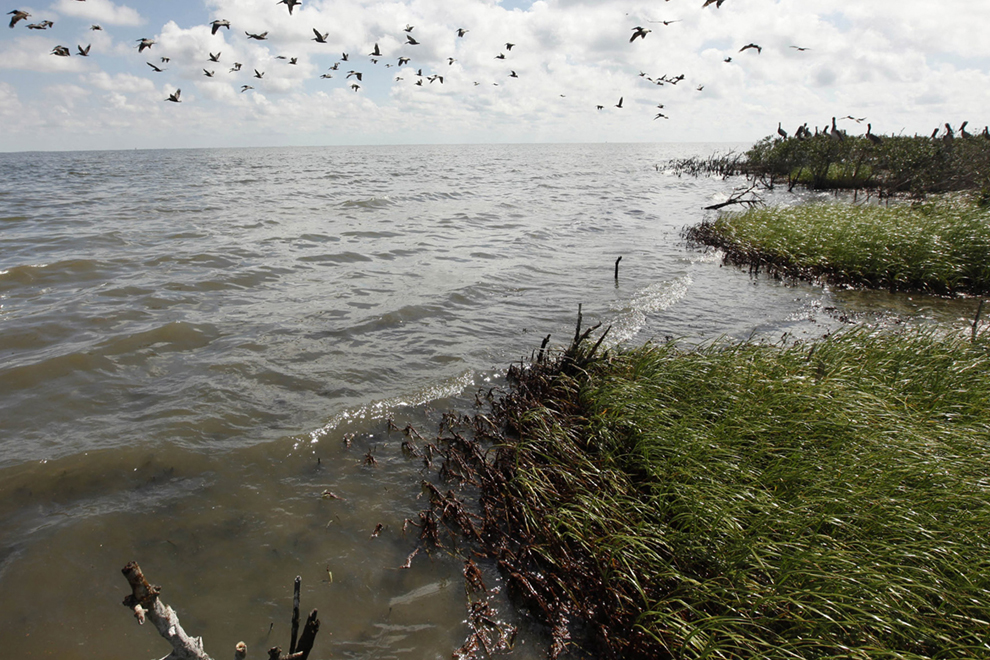
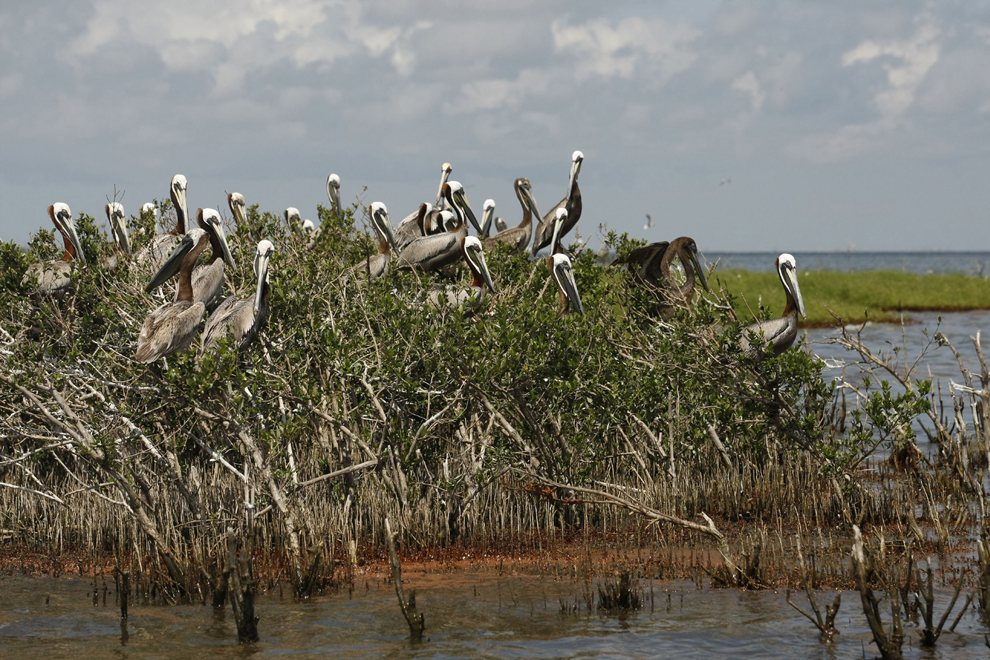
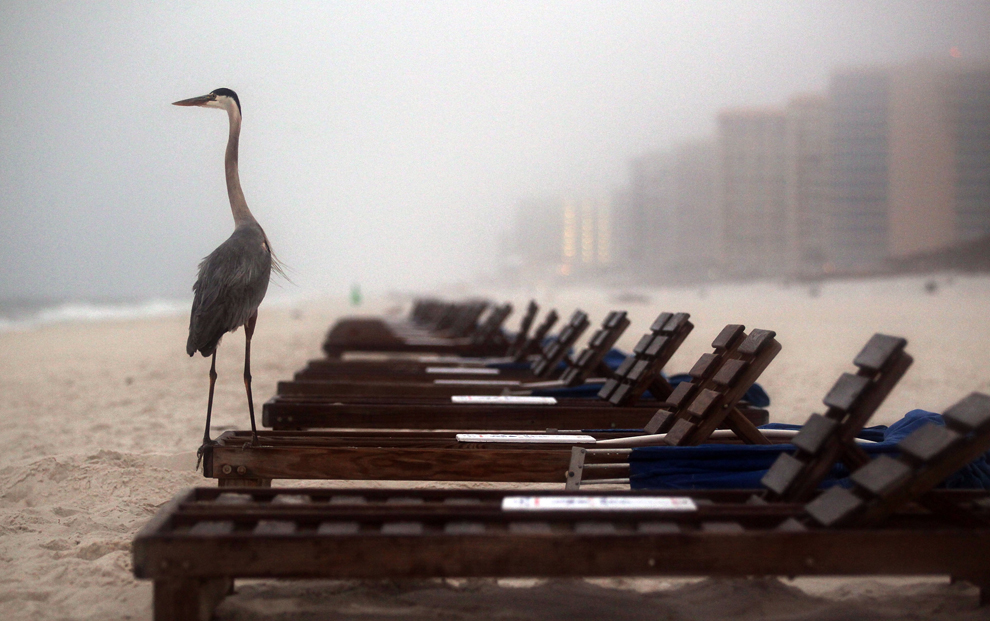
No comments:
Post a Comment